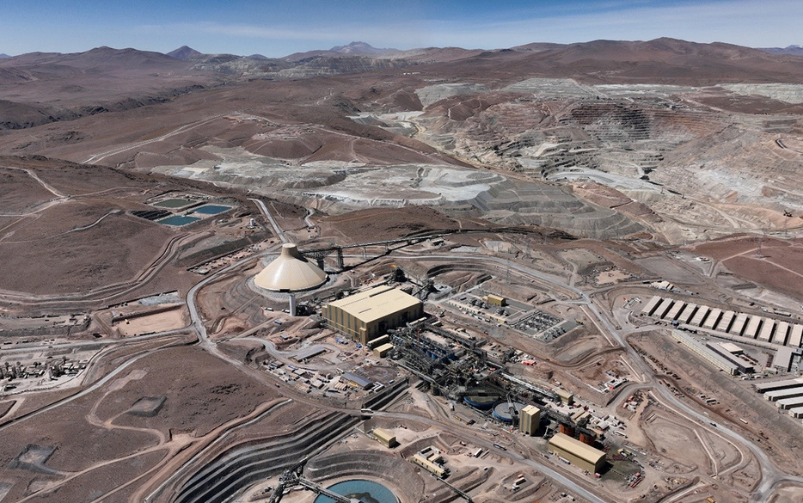The Greenstone mine officially opened on Aug. 29 and Equinox Gold said that it will be the company’s largest and lowest-cost mine. Courtesy of Equinox Gold.
Welcome back to your weekly mining news recap, where we catch you up on some of the news you may have missed. This week’s headlines include trains running again after a four-day work stoppage, a labour agreement reached at Lundin Mining’s Caserones mine and BHP’s plans to boost its copper profits.
On Thursday, Equinox Gold Corp. officially opened its new Greenstone open-pit gold mine, located near Geraldton, Ontario, after nearly three years of construction. First gold was poured at the mine on May 22, and the operation continues its ramp-up to commercial production, which is on track for the third quarter of this year. So far, the mine has produced approximately 2,625 ounces of gold in May, 13,625 ounces in June and 19,750 ounces in July. According to a 2023 construction update, a total of $1.23 billion was expected to be spent on construction of the project. In an Aug. 29 press release, Equinox CEO Greg Smith said that the mine was constructed “on time and on budget.”
The federal government has plans to impose new tariffs on Chinese-made electric vehicles (EV), aluminum and steel as it aims to safeguard Canadian manufacturers, as reported by Bloomberg. The government announced that a 100 per cent surtax on Chinese-made EVs will start on Oct. 1 and a 25 per cent tariff on steel and aluminum imported from China will begin on Oct. 15. The government will also conduct a 30-day consultation process regarding batteries and battery parts, semiconductors, solar products and critical minerals. Experts anticipate that China will likely retaliate against Canada in some form.
ICMM and the International Network for Acid Prevention (INAP) are teaming up to help mining companies prevent and reduce water pollution stemming from acid rock drainage and metal leaching. The partnership is focused on creating a new resource to aid with the implementation of INAP’s Global Acid Rock Drainage (GARD) Guide in mining operations, which is targeted towards non-specialists that work either on site or at the corporate level, with the resource expected to be shared early next year.
Rail workers were back and trains were running again at two of Canada’s railways as of Monday after a work stoppage that lasted four days, as reported by The Canadian Press. The federal labour board ordered Canadian National Railway Co. and Canadian Pacific Kansas City (CPKC) to resume operations on Aug. 26, with 9,300 workers returning to their jobs after a lockout. The labour board ordered that binding arbitration should begin this week, although the union has today filed court appeals to challenge the arbitration directive, saying it threatens their right to collectively bargain.
Lundin Mining and union workers at the company’s Caserones copper mine in Chile have reached an agreement following a strike that started on Aug. 12, the company announced on Saturday, as reported by Reuters. Union members agreed to a 36-month collective bargaining agreement, which includes a 2.5 per cent salary increase, a signing bonus and a loan of around US$3,300 per worker. The company stated that the mine was operating at half capacity during the strike. Last year, Caserones produced 139,520 tonnes of copper.
Due to a reduced demand for iron ore in China, BHP CEO Mike Henry told Bloomberg that the company is hoping to boost its profits from copper, as nearly two-thirds of BHP’s revenue comes from iron ore. The company plans to invest more in its copper projects instead of making new acquisitions, although it tried unsuccessfully to acquire rival Anglo American earlier this year and announced in August that it would buy Filo Mining Corp. with Lundin Mining. BHP has plans to double its copper production at its Australian operations, while also maintaining investments in its South American assets.
First Quantum Minerals is pursuing compensation from Panama’s government for a stockpile of semi-processed copper ore, valued between US$225 million and US$340 million, which has been left idle at its shuttered Cobre Panama mine, as reported by Bloomberg. The government aims to determine if the ore was mined before or after Cobre Panama was forced to shut down late last year, while First Quantum contends that Panama should either permit the shipment of the ore or provide compensation based on its current market value. The claim is part of the company’s larger arbitration efforts against Panama, which includes seeking roughly US$20 billion in damages following the closure of Cobre Panama.
It can be difficult for female mining engineering graduates from Latin America to find jobs in their field, which is why the Artemisa Mining Challenge stepped up to place them with Canadian companies facing a labour shortage, as reported by Alice Martin for the August issue of CIM Magazine. The program aims to hire 24 female mining engineers from Latin American countries by the end of 2024 and has so far hired seven women as engineers in training at Canadian mining companies.
Flin Flon, Manitoba became a significant mining region in the late 1920s after the discovery of valuable polymetallic mineral deposits, wrote Ailbhe Goodbody for the June/July issue of CIM Magazine. At first, there were multiple challenges to building a successful operation at the site, from simply gaining access to the isolated site, to difficulties processing the complex ore. In 1925, new techniques for flotation of the complex ores were developed, enabling successful mining operations to commence in 1927. The area continued to evolve with various mining and processing upgrades until the last operational mine in Flin Flon eventually ceased in 2022.
That’s all for this week. If you’ve got feedback, you can always reach us at editor@cim.org. If you’ve got something to add, why not join the conversation on our Facebook, Twitter, LinkedIn or Instagram pages?




